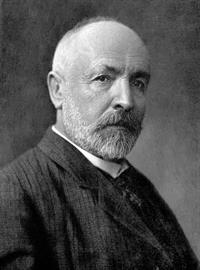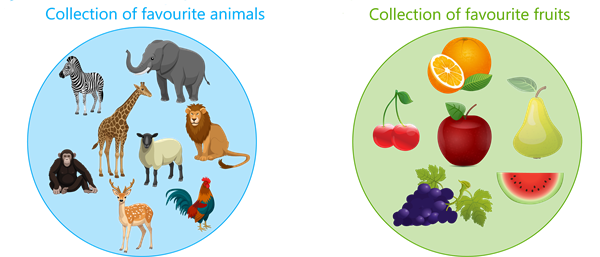
PUMPA - SMART LEARNING
எங்கள் ஆசிரியர்களுடன் 1-ஆன்-1 ஆலோசனை நேரத்தைப் பெறுங்கள். டாப்பர் ஆவதற்கு நாங்கள் பயிற்சி அளிப்போம்
Book Free DemoWe all have a collection of favourite things, set of objects, group of objects say set of books, list of favourite ice-cream, collection of dresses that we prefer to wear, group of people belongs to particular NGO, set of even natural number less than \(50\), collection of alphabets, group of members in the cricket team, and so on.
Importance of set language:
In day-to-day life, our use of language on the collection of objects is not detail. Sometimes it may confuse.
Let us discuss some examples of the collection of numbers.
1. \(0\),\(1\),\(2\),\(3\),...
Here the last three dots means it goes up to infinity. And this sequence is nothing but the set of whole numbers.
2. Consider the sequence \(2\), \(4\),...
The sequence could go like \(2\), \(4\), \(6\), \(8\),...
or
It could go like \(2\), \(4\), \(8\), \(16\),...
If it is mentioned like 'the set of positive multiples of 2', the sequence must follow the first condition.
If it is mentioned like 'the set of powers of 2', the sequence must follow the second condition.
Thus, to avoid the confusion between the collection of numbers or sets of numbers, we have to follow the rules in set theory.
Sets are a fundamental property of mathematics. The concept of sets is used in almost every branch of mathematics. Sets used to define the functions and relations. The study of geometry, sequences, probability, etc. requires the knowledge of sets.
Set theory was developed by German mathematician George Cantor(1845-1918). In mathematics, sets are very useful because all the mathematical structures can be made as a set.

Let us see the pictorial form of sets.

The first picture is a collection of favourite animals and the second picture is a collection of favourite fruits.
Thus, it is observed that our preference moved from individual objects to the collection of objects.
A set is a collection of well defined object.
Example:
Let us discuss some day-to-day life collection of objects:
- Collection of rivers of India.
- Collection of cities in Tamil Nadu.
- Collection of Ration shop in a city.
- Collection of prime numbers.
- Collection of consonants in English alphabets.
- Collection of trees in a street.
Let us discuss some of the usual mathematical collections:
- The set of natural numbers.
- The set of whole numbers.
- The set of integers.
- The set of rational numbers.
- The set of even numbers.
- The set of odd numbers.
- The set of multiples of \(5\) less than \(100\).
- The set of squares of numbers less than \(1000\).
Important!
Sets only take the well-defined collections. That is, the collection should be universally true. It does not just depend on individual opinion on the object. Let us see some collection which are not universally true.
Example: